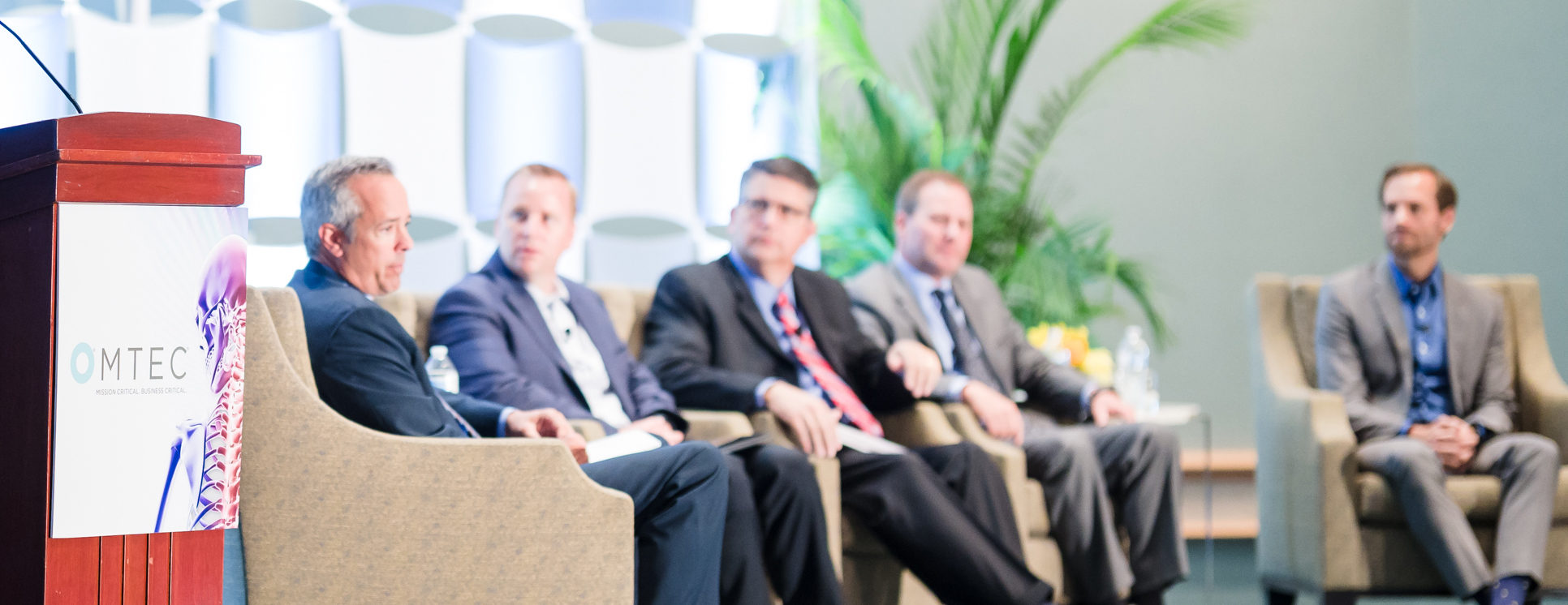
During the opening keynote panel at OMTEC® 2019, a group of executives spoke about the future of the orthopedic industry, answering the questions: How will technology personalize the patient’s experience? What role will data play in surgeon and device company decision making? Will companies’ strategies for implant design and the supply chain change to meet the needs of the growing ASC market?
The keynote was moderated by Mike Mogul of HealthpointCapital, who is most known for his leadership roles at Stryker and DJO Global. The device company executives on the panel—Rob Ball, Genesis Innovation Group; Vernon Hartdegen, CrossRoads Extremity Systems and Andy McLeod, Corin USA—often turned the questions to the surgeon panelist, Padraic Obma, M.D., of Strive Orthopedics and owner of an ASC.
We offer three takeaways from their discussion.
Better Personal Care through Advanced Technology
Dr. Obma said that he will delay patient’s surgery if they haven’t met their exercise goals in the six weeks leading up to the procedure. He knows if they’ve met their goals because his company, Strive Orthopedics, uses mobile software and wearable technology to measure their actions.
“We take it seriously enough to where we’ll cancel or reschedule surgery if they’re not engaged,” said Dr. Obma. “A bigger cost to us is not the case we didn’t do, it’s the case we did and had a complication afterward.”
Patient-facing technology works because it makes patients feel connected; it increases engagement and improves outcomes, Dr. Obma said. Personalized care through remote access will be a “shift in dynamics.”
Mr. McLeod suggested that this shift in dynamics will also create more personalized implant technology, giving patients better long-term results. Even with off-the-shelf implants, Mr. McLeod said that surgeons will be better able to plan for sizing before the operation. And as robotics advance, surgeons can better plan for customized implants that are more highly personalized to the patient. The evolution of this technology will force the orthopedic industry to look differently at implant design, he said.
For example, within the next two years, Mr. McLeod believes that there will be a greater understanding of each patient’s soft tissue structure. “If you’re able to preoperatively predict ligament tension or soft tissue involvement within the joint, you’re going to see much different implants,” he said. “Every patient is different; every patient has different soft tissue.”
Corin recently purchased OMNI Orthopedics and its robotic system, which features tools to measure ligament function. Hospitals and patients have shown that they’re willing to pay more for technology, Mr. McLeod said, and the number of people willing to pay will increase as costs come down. With total hip and knee replacement expected to surge by 2030, better care will be essential. Mr. McLeod said that better care means software and technology that produces results based in evidence, not simply bragged about in marketing.


Enhanced Data Leads to Improved Results
While Dr. Obma said that the data Strive receives through its patient-facing app has helped improve care, his company and most others are still in the data collection stage.
Soon, that will change when companies with technology like apps, navigation and robotics are able to aggregate and disseminate the data to help create better procedure and implant insights and results.
When optimally leveraged, data will work for the orthopedic industry just as game film works for football coaches, Dr. Obma said. Football coaches can identify successful strategies when watching game film, whereas surgeons will be able to look at surgery data to confirm why a knee replacement turned out well. This will allow surgeons to refine their processes, ridding themselves of poor techniques and focusing on what works best.
“That certainly benefits the provider and the patient,” he said. “If we can extend the longevity of the implant five to 10 years, that’s a massive impact in terms of cost savings for the country and the world.”
Mr. Hartdegen said that better data has led to better preoperative planning and intraoperative adjustments.
“It’s predictability,” he said. “It needs to be patient specific and procedure specific.”
Right-size Implant and Instrument Sets for ASCs
Orthopedic procedures continue to move away from the hospital because outpatient settings have demonstrated the ability to increase patient satisfaction and lower the cost of surgery. Device companies have been forced to execute on new product and supply chain strategies, including a smaller number of implants and instrument trays.
This change has been noticed by doctors and nurses alike, making surgery easier for both groups. Mr. Ball noted that he’s seen nurses fist-bumping at how easy it is to have a single tray of instruments, and has had surgeons ask him, “Where’s all the stuff?”
“It feels good to get that kind of feedback,” Ball said.
This smaller footprint has changed the way that surgeons and nurses operate, and it’s also changed the way that device manufacturers produce. Hartdegen said that he now gets questions like, “How much shelf space will these instruments take up?”
“I can tell you early in my career as an engineer, I did not think about shelf space,” he said.
The panelists agreed that personalized medicine, data and ASCs are the future of orthopedics and device companies of all sizes must embrace strategies to leverage these shifts.
Hal Conick is an ORTHOWORLD® Contributing Editor.




